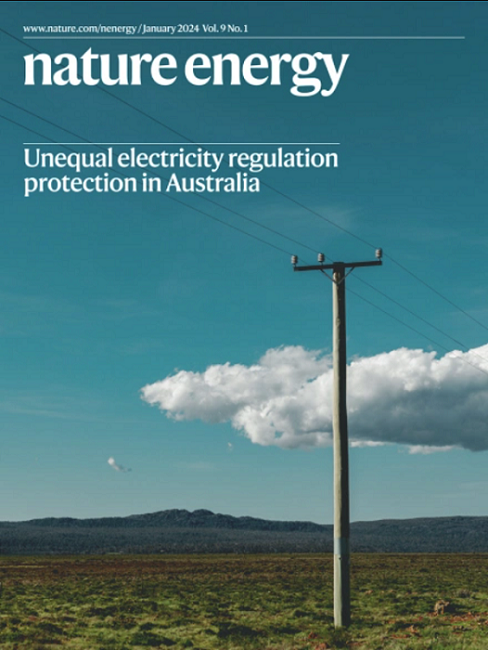Balancing colour and efficiency
IF 60.1
1区 材料科学
Q1 ENERGY & FUELS
引用次数: 0
平衡色彩和效率
钙钛矿太阳能电池由于其颜色可调性、低光条件下的高性能和半透明性,在建筑集成光伏应用中显示出巨大的前景。特别是,在实际安装中,可以使用双面结构,前后电极半透明,以从两侧收集光线,从而提高能量产量。彩色外观可以通过器件结构内两个fabry - p空腔(即后电极和电荷输运/钙钛矿层)之间的光学干涉来实现。然而,功率转换效率和颜色特性之间的权衡限制了它们在现实世界中的应用。现在,南京大学、劳伦斯伯克利国家实验室和Renshine太阳能公司的谭海仁及其同事通过金属中间层调制后侧电极的光学响应,并抑制钙钛矿层中的有害缺陷,实现了双面太阳能电池的颜色可调性和高效率。为了改善颜色外观,研究人员在后电极的氧化锡/氧化铟锌界面引入了具有高反射率的超薄银金属层。增强的反射率加强了腔的光学干涉,从而提高了颜色纯度和扩大了色域。为了提高器件效率,Tan和团队使用氯化铵添加剂抑制钙钛矿体中的缺陷。在0.2太阳照射强度的反照率条件下,它们的功率转换效率达到27.4%。为了展示太阳能电池在建筑一体化方面的美学吸引力,研究人员复制了梵高的画作《星夜》,将太阳能模块排列成马赛克图案。这些结果扩展了钙钛矿光伏电池的潜力,为城市环境提供美观和高性能的能源解决方案。
本文章由计算机程序翻译,如有差异,请以英文原文为准。
求助全文
约1分钟内获得全文
求助全文
来源期刊

Nature Energy
Energy-Energy Engineering and Power Technology
CiteScore
75.10
自引率
1.10%
发文量
193
期刊介绍:
Nature Energy is a monthly, online-only journal committed to showcasing the most impactful research on energy, covering everything from its generation and distribution to the societal implications of energy technologies and policies.
With a focus on exploring all facets of the ongoing energy discourse, Nature Energy delves into topics such as energy generation, storage, distribution, management, and the societal impacts of energy technologies and policies. Emphasizing studies that push the boundaries of knowledge and contribute to the development of next-generation solutions, the journal serves as a platform for the exchange of ideas among stakeholders at the forefront of the energy sector.
Maintaining the hallmark standards of the Nature brand, Nature Energy boasts a dedicated team of professional editors, a rigorous peer-review process, meticulous copy-editing and production, rapid publication times, and editorial independence.
In addition to original research articles, Nature Energy also publishes a range of content types, including Comments, Perspectives, Reviews, News & Views, Features, and Correspondence, covering a diverse array of disciplines relevant to the field of energy.
 求助内容:
求助内容: 应助结果提醒方式:
应助结果提醒方式:


